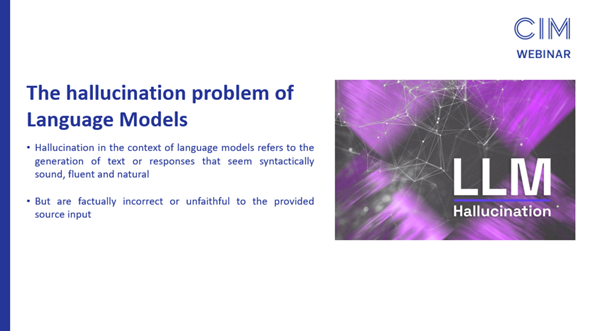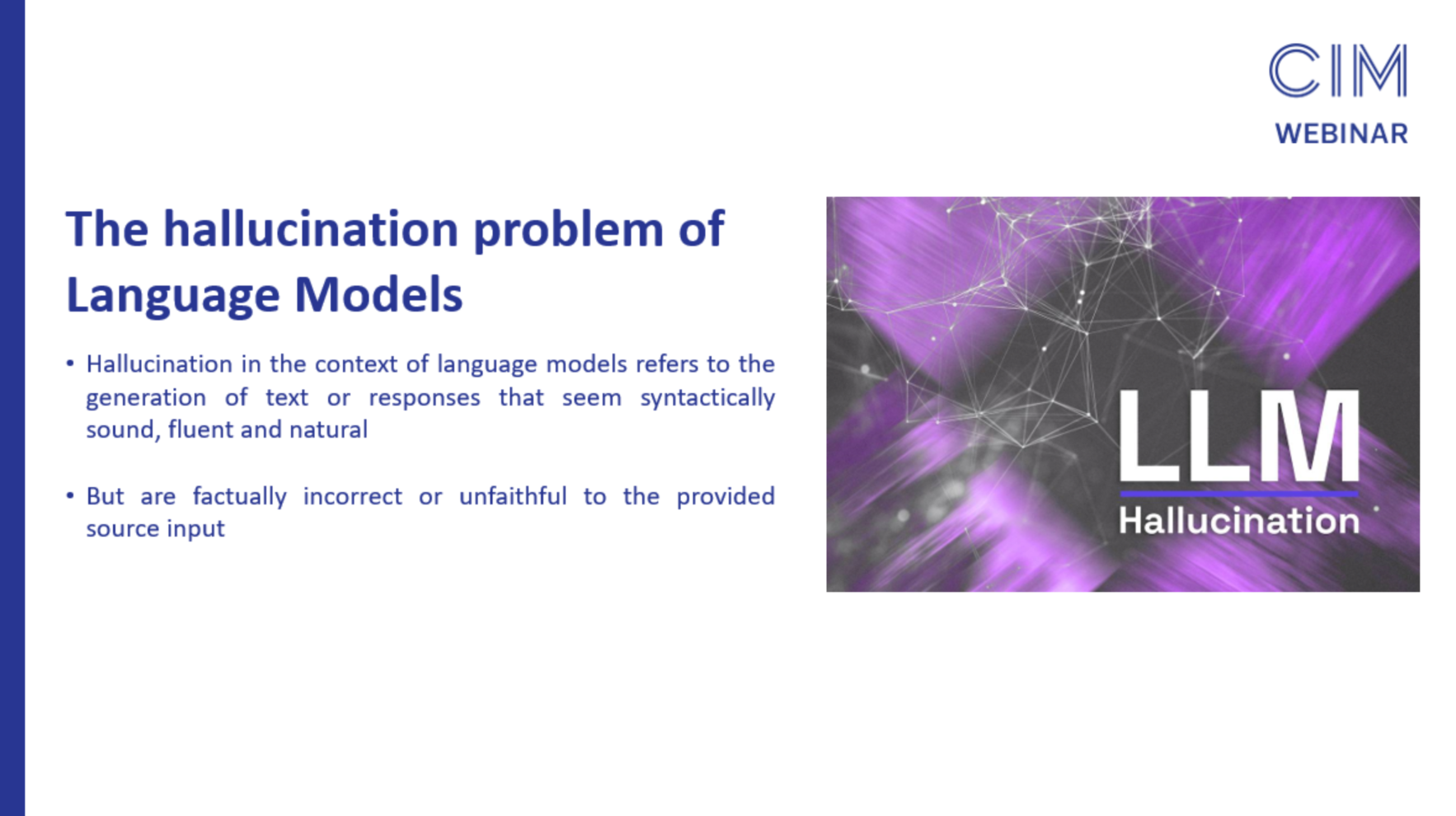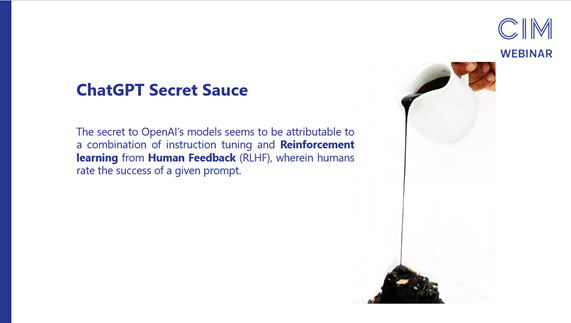In this article, Sophie Wetherall consolidates the learnings from recently attended CIM AI for Copywriting course, CIM Members Exclusive Webinar and CIM Marketing Club, and shares practical tips to help you boost creativity and productivity in ways that were inconceivable until now!
After attending the CIM AI for Copywriting course with the wonderful Jonathan Gabay, the ‘Elevating your marketing by using generative AI webinar’ with Vincent Sider and the ‘Latest trends in digital marketing' webinar with Daniel Rowles I would like to impart some of the key information and top tips I have learnt.
Mastering the Art of Prompt Engineering
Artificial Intelligence is a hot topic among many of us as we think about how we can use it to create compelling content and make our lives a little easier. However, it’s not as simple as it may first seem because to produce quality outputs, we must think about the quality of our inputs, or in other words our prompts.
Crafting quality prompts is crucial for guiding large language models (LLMs) such as ChatGPT in producing engaging blog posts, persuasive email campaigns, creative product descriptions, and effective ad copy.
Understanding the limitations of AI
Before delving into the intricacies of prompt engineering, it is crucial to acknowledge the inherent limitations of AI.
It is essential to recognise that AI is not a human replacement. While systems can analyse vast amounts of data efficiently, they cannot understand context, ask critical questions, or make subjective judgements.
It is also important to consider the quality and reliability of generated content. The term used to describe the degeneration of content outputs is hallucination. This refers to the generation of text or responses that appear syntactically sound, fluent, and natural but are factually incorrect or unfaithful to the provided source input.
What is effective prompting?
In order to combat some of the limitations of AI we must create effective prompts. Here are some top tips to do so:
- Start simple: Ensure you use clear, concise, and specific language. You can begin with simple prompts and then gradually increase the complexity.
- Formatting: Make your prompts easy to read- think about how you would best consume information. Perhaps you could capitalise key instructions or use bullet points. Make sure your spelling and grammar are correct.
- Provide context: Give the AI model enough context to understand your request. This could include providing instructions about your brand's tone of voice. Remember to find the balance between specificity and an appropriate level of detail.
- Break down complex tasks: For larger tasks break them down into smaller more manageable subtasks.
- Use examples: Provide examples to help the AI model understand your expectations.
Exploring prompting methods
To gain more understanding about prompting, we can consider the different methods available and the results that they will elicit.
- Zero-shot prompting: Generates creative content or copy without explicit instructions or specific details about the desired output.
- One-shot prompting: AI is given a single example or reference piece and is asked to generate similar content or copy based on that sample.
- Few-shot prompting: AI is given a limited set of examples or references and asked to generate creative content or copy based on those samples.
- Chain of Thought: AI is given a starting point or an initial idea and is encouraged to explore and expand upon that idea.
Prompting Frameworks:
Finally, here are some examples of specific prompting frameworks that you could implement to gain more compelling results:
- Role prompting: Use the phrase 'ACT AS' this allows you to give the AI a role which might help to provide context.
‘Act as a marketing manager with 20+ years of experience and create a social media campaign for [COMPANY]’
- Ask my approach: After explaining your task ask the AI if it has any questions for you regarding the task.
‘Can I answer any questions to help with the task before you get started?’
You might also ask the model 'Do you understand?'.
- Self-consistency: Ask for multiple answers and then ask for one final answer that is consistent across all three.
- ‘Act as three marketing experts and devise three ideas for an email marketing campaign for [SUBJECT].’
- ‘Give me one final idea using consistencies from each of the three ideas.’
- Emotional prompts: Use emotional language to help get better results, using phrases such as: 'This is very important to my career' or 'You'd better be sure'.
About The Author | Connect with Sophie on LinkedIn
Sophie Wetherall graduated in May from the London College of Fashion with First Class honours degree in Fashion Journalism. She has extensive experience writing for a variety of publications and has even launched her own magazine, Settlement. Sophie has recently joined the marketing team at the award-winning glass and glazing manufacturer Tradeglaze where she is responsible for the marketing strategy and tactics of the firm's retail company Jackson Windows, the UK's 2023 Commercial Installer of the Year. She is a member of the CIM and has been driving innovation, particularly by learning and applying Artificial Intelligence tools and tactics.
Note: You can sign up for CIM's AI for Copywriting workshop here.





